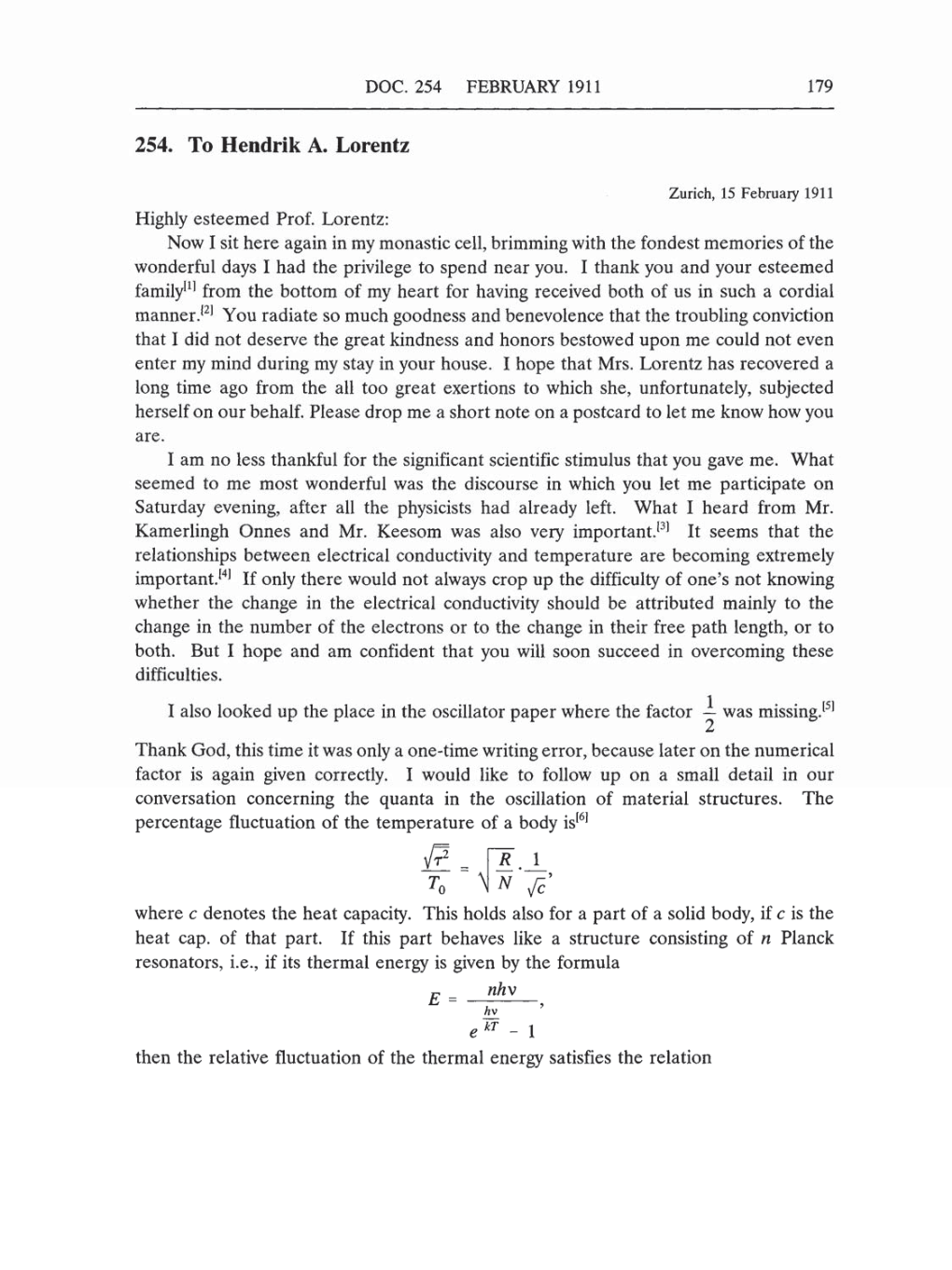DOC.
254 FEBRUARY
1911
179
254.
To
Hendrik
A.
Lorentz
Zurich, 15 February 1911
Highly
esteemed
Prof.
Lorentz:
Now
I
sit
here
again
in
my
monastic
cell,
brimming
with
the fondest memories of
the
wonderful
days
I
had
the
privilege
to
spend
near
you.
I
thank
you
and
your
esteemed
family[1]
from
the bottom of
my
heart
for
having
received
both of
us
in such
a
cordial
manner.[2]
You radiate
so
much
goodness
and benevolence that the
troubling
conviction
that
I
did not
deserve
the
great
kindness
and
honors
bestowed
upon
me
could not
even
enter
my
mind
during
my stay
in
your
house. I
hope
that
Mrs.
Lorentz has recovered
a
long
time
ago
from
the
all
too great
exertions to which
she, unfortunately,
subjected
herself
on
our
behalf.
Please
drop
me
a
short
note
on a
postcard
to
let
me
know how
you
are.
I
am no
less
thankful
for
the
significant
scientific stimulus
that
you gave
me.
What
seemed
to
me
most
wonderful
was
the discourse in which
you
let
me
participate
on
Saturday
evening,
after
all
the
physicists
had
already
left.
What
I
heard
from Mr.
Kamerlingh
Onnes
and Mr.
Keesom
was
also
very important.[3]
It
seems
that
the
relationships
between electrical
conductivity
and
temperature
are
becoming
extremely
important.[4]
If
only
there
would
not
always crop
up
the
difficulty
of one's
not
knowing
whether the
change
in the
electrical
conductivity
should be
attributed
mainly
to
the
change
in
the number of
the electrons
or
to
the
change
in
their free
path
length, or
to
both.
But
I
hope
and
am
confident that
you
will
soon
succeed in
overcoming
these
difficulties.
I
also
looked
up the place in the oscillator
paper where
the
factor
was
missing.[5]
21
Thank
God,
this time it
was
only a
one-time
writing
error,
because
later
on
the numerical
factor
is
again given correctly.
I would like
to
follow
up
on a
small
detail
in
our
conversation
concerning
the
quanta
in
the
oscillation
of material
structures.
The
percentage
fluctuation of the
temperature
of
a body is[6]
rR
N
1P
T0
where
c
denotes the heat
capacity.
This holds also
for
a
part
of
a
solid
body,
if
c
is
the
heat
cap.
of that
part.
If
this
part
behaves
like
a
structure
consisting
of
n
Planck
resonators,
i.e.,
if its thermal
energy
is
given by
the formula
E=
nhv
e
h
-
1
then the relative
fluctuation of
the
thermal
energy
satisfies
the relation
ekT
-
v
